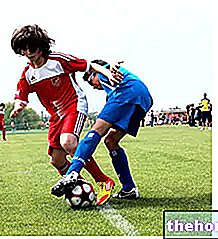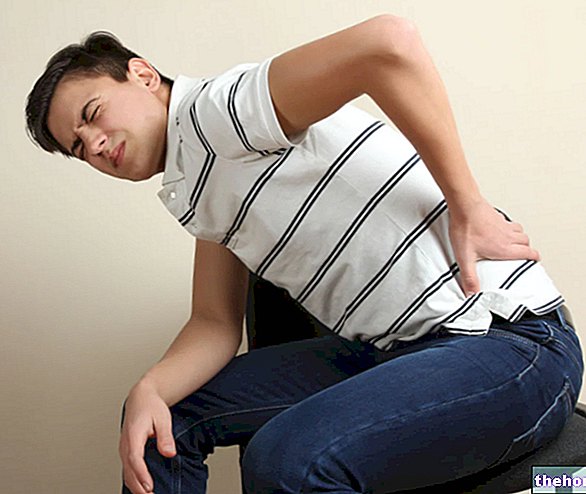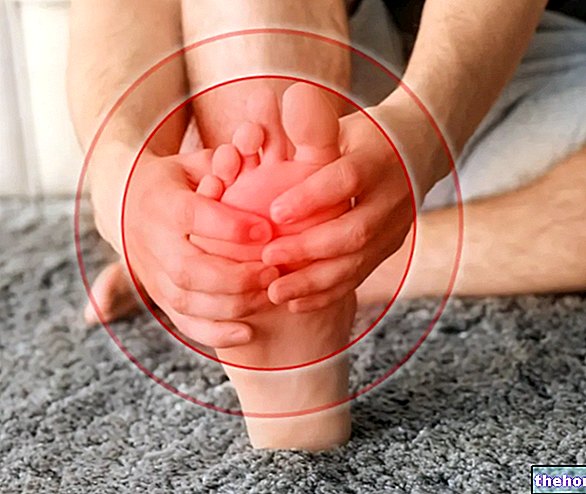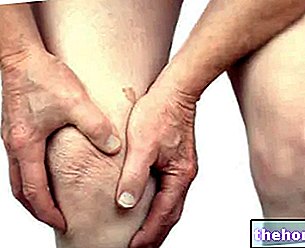Edited by Dr. Giovanni Chetta
Deep fascia biomechanics

Studies show that the intervertebral disc is rarely destroyed by pure axial compression, as the vertebral body is destroyed long before the annulus fibrosus (Shirazi-Adl et al. 1984). The articular plate of the vertebral body ruptures under axial load. (by pure compression) of about 220 kg (Nachemson, 1970): the pressure of the nucleus of the intervertebral disc causes the fracture of the end-plate in which part of the nuclear material migrates (Schmorl's nodules) and being a damage to the " Cancellous bone can heal quickly. This although the vertebral metamer breaks at about 1,200 kg (Hutton, 1982) and the annulus fibrosus, for a pure axial compression of not less than 400 kg, undergoes only 10% of deformation (Gracovetsky, 1988).

On the other hand, however, there is no doubt that the vertebral compression load can reach 700 kg by loading heavy weights (the force applied on L5-S1 lifting a weight flexed to 45 degrees is about 12 times the weight itself).
In the 1940s, Bartelink proposed the idea, still commonly accepted today, that, to lift a weight, the erector spinal muscles act on the spinous processes of the relative vertebrae aided by intra-abdominal pressure (IAP) which, in turn, would push on the diaphragm (Bartelink, 1957). Since it has been verified that the maximum force exerted by the erector muscles corresponds to 50 kg (McNeill, 1979), through a simple calculation it is shown that, according to this hypothesis, by lifting a load of 200 kg the intra -abdominal should reach a value about 15 times the blood pressure (the maximum value of IAP, calculated on a transversal surface of 0.2 m2 is 500 mm Hg - Granhed 1987).


The erector muscles (multifidus) and intra-abdominal pressure, together with the psoas muscles, actually regulate lumbar lordosis three-dimensionally, thus assuming an important role as modulators of the transfer of forces between muscles and fascia.
In fact, internal abdominal pressure does not significantly compress the diaphragm; in reality, it acts on the lumbar lordosis and therefore on the transmission of forces between muscles and fascia. In fact, the intra-abdominal pressure flattens the fascia causing the transverse abdominal muscles (which constitute the active part of the dorsal-lumbar fascia as its fibers are attached free edges of it) to traction on the same plane as the fascia. When the intra-abdominal pressure is low this mechanism is disabled and any action of the abdominal muscles (of the rectus muscle in particular) leads to a flexion of the trunk. In other words, if the tension of the internal abdominal muscles is high, the lumbar region goes into hyperlordosis by extending, while if the pressure in the abdomen is low the spine can flex with the pelvis in retroversion, thus stretching the fascia (retrovertere the pelvis before starting the lifting in flexion is a typical attitude of people who lift weights without problems. In this latter condition there is also less opposition to the systolic blood pressure, so the blood flows better towards the extremities (in some way our muscular system). skeletal means that there is no excessive internal abdominal pressure so as to preserve peripheral blood circulation.) Therefore the fascia can make its important contribution during the flexion of the spine if abdominal tension is decreased (Gracovetsky, 1985).
Other articles on "Deep fascia biomechanics"
- Fascial mechanoreceptors and myofibroblasts
- Extracellular matrix
- Collagen and elastin, collagen fibers in the extracellular matrix
- Fibronectin, Glucosaminoglycans and Proteoglycans
- Importance of the extracellular matrix in cellular equilibria
- Alterations of the extracellular matrix and pathologies
- Connective tissue and extracellular matrix
- Deep fascia - Connective tissue
- Posture and dynamic balance
- Tensegrity and helical motions
- Lower limbs and body movement
- Breech support and stomatognathic apparatus
- Clinical cases, postural alterations
- Clinical cases, posture
- Postural evaluation - Clinical case
- Bibliography - From the extracellular matrix to posture. Is the connective system our true Deus ex machina?




























